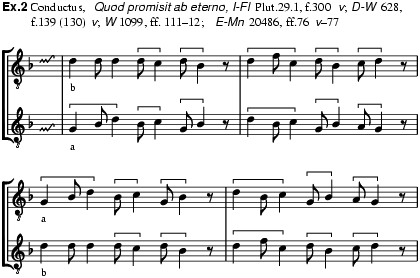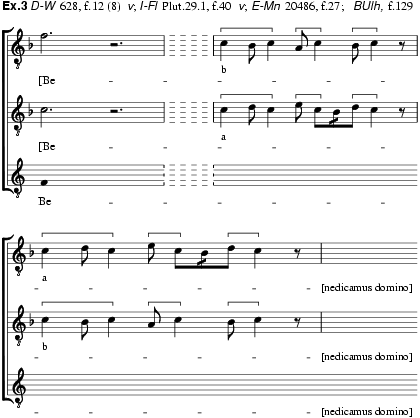
(from Ger. Stimmtausch).
A medieval polyphonic technique (more accurately, phrase-exchange) that involves two voices of equal range in the mutual alternation of phrases; it is easily achieved in two-part counterpoint in contrary motion for equal voices and was therefore widely practised throughout the 12th century (ex.1). Voice-exchange also appears quite often in Notre-Dame polyphony, specifically in passages that are not restricted by a pre-existing tune, e.g. in caudae of Conductus (ex.2), and in the upper voices of organal passages in organa for three or four voices (ex.3). Johannes de Garlandia gave an example of the procedure, which he described as ‘repetitio diverse vocis’, to be encountered ‘in three- and four-part organa, and conductus, and in many other things’.



Voice-exchange was much used by 13th-century English composers in conductus, in organal settings of Alleluias, and in motets, and was a constituent element in the technique known as Rondellus. After 1300 the expansion of the two-voice framework beyond one octave and the consequent gradual separation of voice ranges caused the general abandonment of voice-exchange. The last works which thoroughly exploited the technique, in both strict and varied form, were some two dozen English motets in three and four voices from the first half of the 14th century.
The first use of the German term Stimmtausch seems to occur in an article by Friedrich Ludwig in 1903–4 (SIMG, v, 177–224, esp. 220). Its English equivalent appears to have originated in Handschin’s article on the Summer Canon in 1949 (MD, iii, 55–94, esp. 82).
ERNEST H. SANDERS/PETER M. LEFFERTS